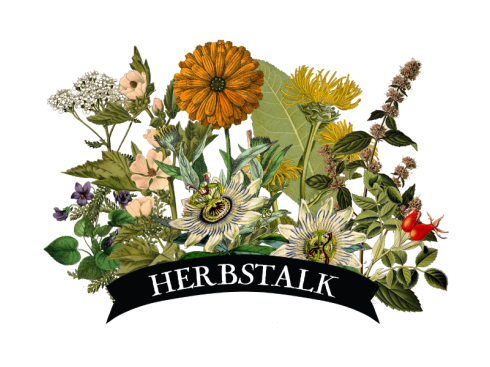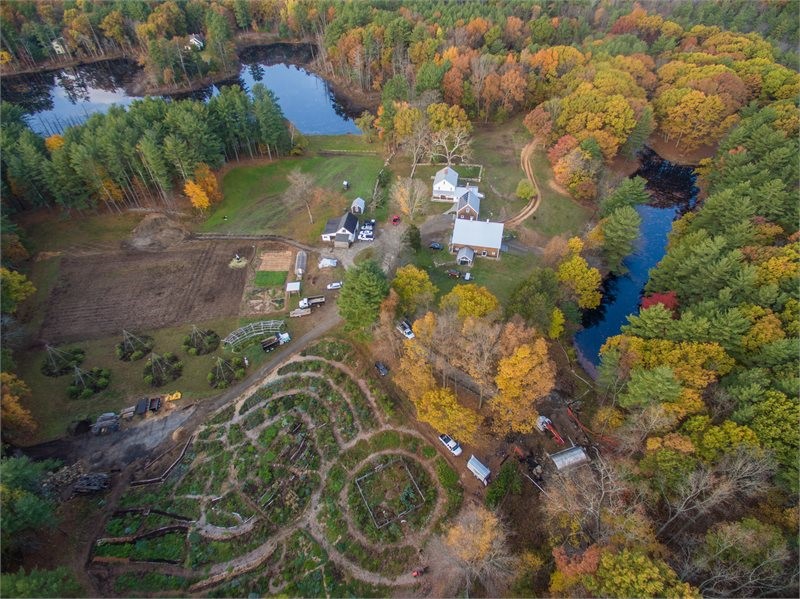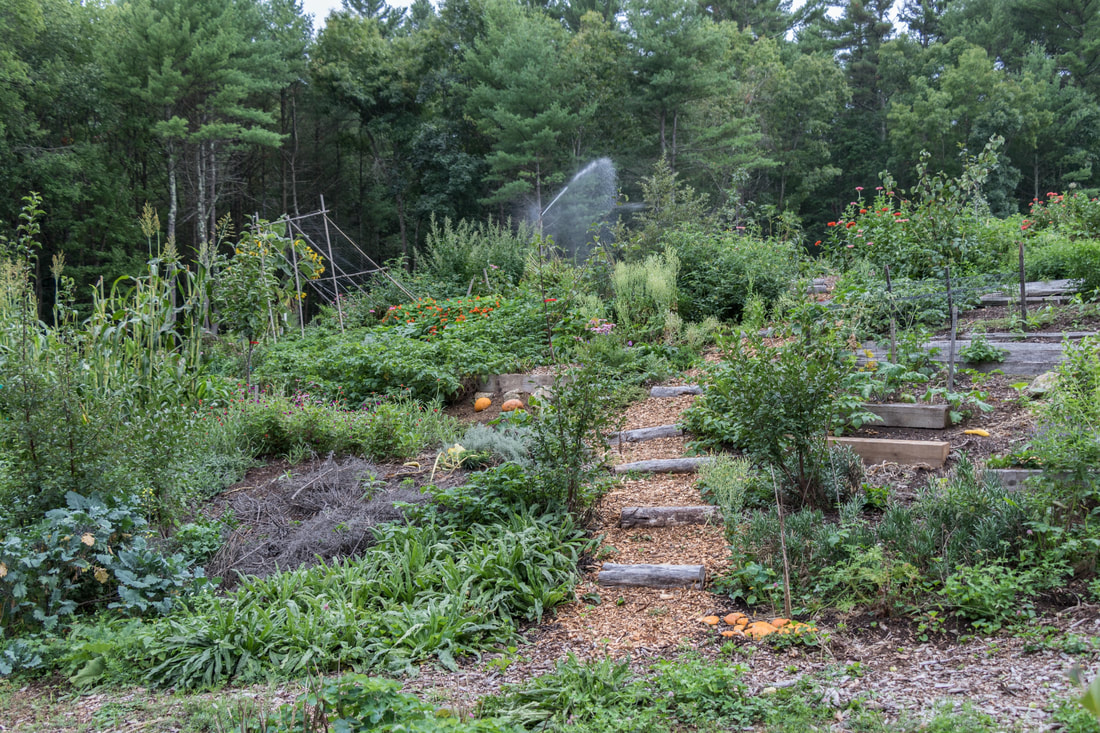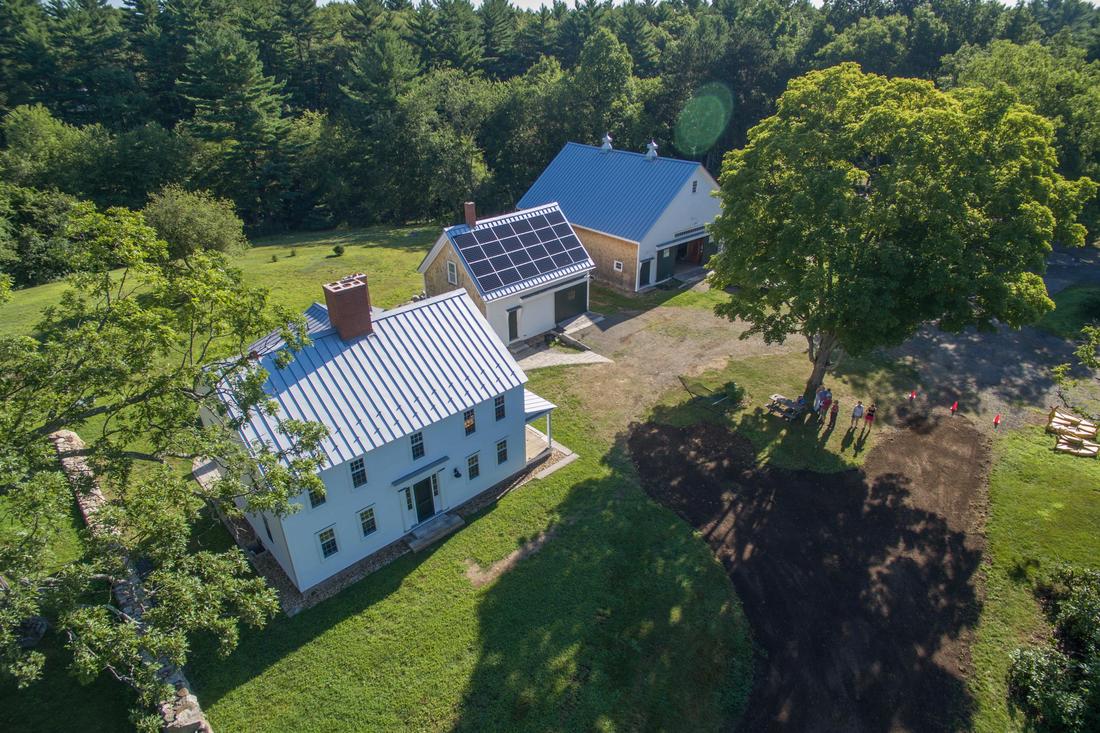|
ifarm LLC is a restored 19th-century farm that grows organic herbs and flowers in a permaculture garden with over 200 plant species. They are half an hour north of Boston and offer many classes on herbalism and permaculture gardening. You can view their organic herbs here. What is permaculture? The word permaculture comes from “Permanent Agriculture.” Permaculture is a regenerative farming approach that takes clues from nature to create self-sustaining garden and livestock ecosystems. How do you apply permaculture at your farm? We don’t spend time tilling the earth, weeding our gardens, growing crops in rows, or harvesting with machines. Instead, we grow over two hundred plant species by hand within a half-acre that includes fruit and nut trees, berry bushes, flowers, vegetables, and herbs. Most of our plants are natives that are highly resilient. The entire garden is mulched with compost and wood chips, and plants are free to migrate to the locations they like best. This integrated design behaves like a self-sustaining ecosystem, freeing us from unnecessary work so we can spend more time enjoying bountiful harvests. The garden works with fungi, birds, and animals to reseed itself, regenerate soils, prevent erosion, recycle nutrients, increase plant immunities, capture sunlight on multiple levels, repel pests, conserve water, and support wild pollinators. Yes, it does all that on its own! This permaculture approach allows us to raise crops that are essentially wild, high in nutrients and low in maintenance. You can see our medicinal and culinary herb availability here! What are the benefits of permaculture? It minimizes the work needed to plant and care for a garden, as the (mostly) native plants reseed themselves and have the support of healthy soils. Since the plants are allowed to migrate to the locations they like best, they are very close to wild, with lots of nutrients and minerals. It greatly minimizes the waste common to farms (topsoil erosion, runoff, fossil fuel usage, insect sprays of any kind), rehabilitates the soils rather than exhausting them, and supports pollinators year-round. Permaculture is uniquely suited to herbalism. Both see nature as a partner. Both recognize the value of all plants, not just those that offer food or beautiful flowers. Both appreciate the ways that nature creates abundance by mixing chaos with order. Native medicinal plants tend to be highly virile, growing very well with little interference from humans. They are excellent companion plants that do well in a diverse garden, especially aromatics and colonizers that repel insects and replenish soils. What are the challenges of permaculture? We feel that permaculture is an excellent option for individuals and businesses that wish to grow herbs. It offers high-quality herbs that grow well with little oversight. The challenge for a business is balancing garden diversity and chaos with the need for efficient harvesting. A large, diverse permaculture garden cannot be harvested as easily as a row-cropped field. How can I apply Permaculture?
For more information and support you can reach out to ifarm at [email protected].
You can also visit their website at: www.ifarmboxford.com. Comments are closed.
|
Archives
November 2023
Categories
All
|





 RSS Feed
RSS Feed